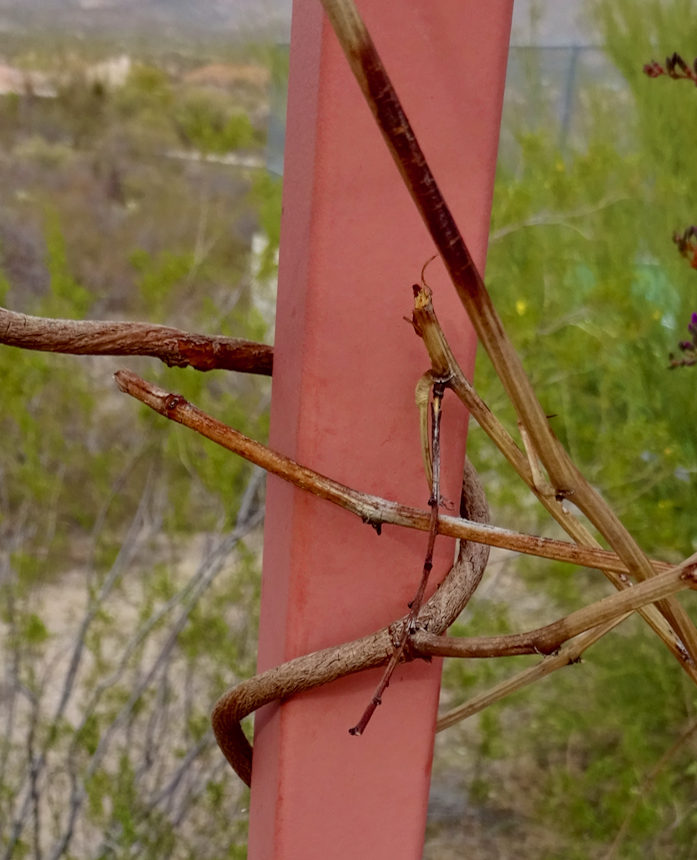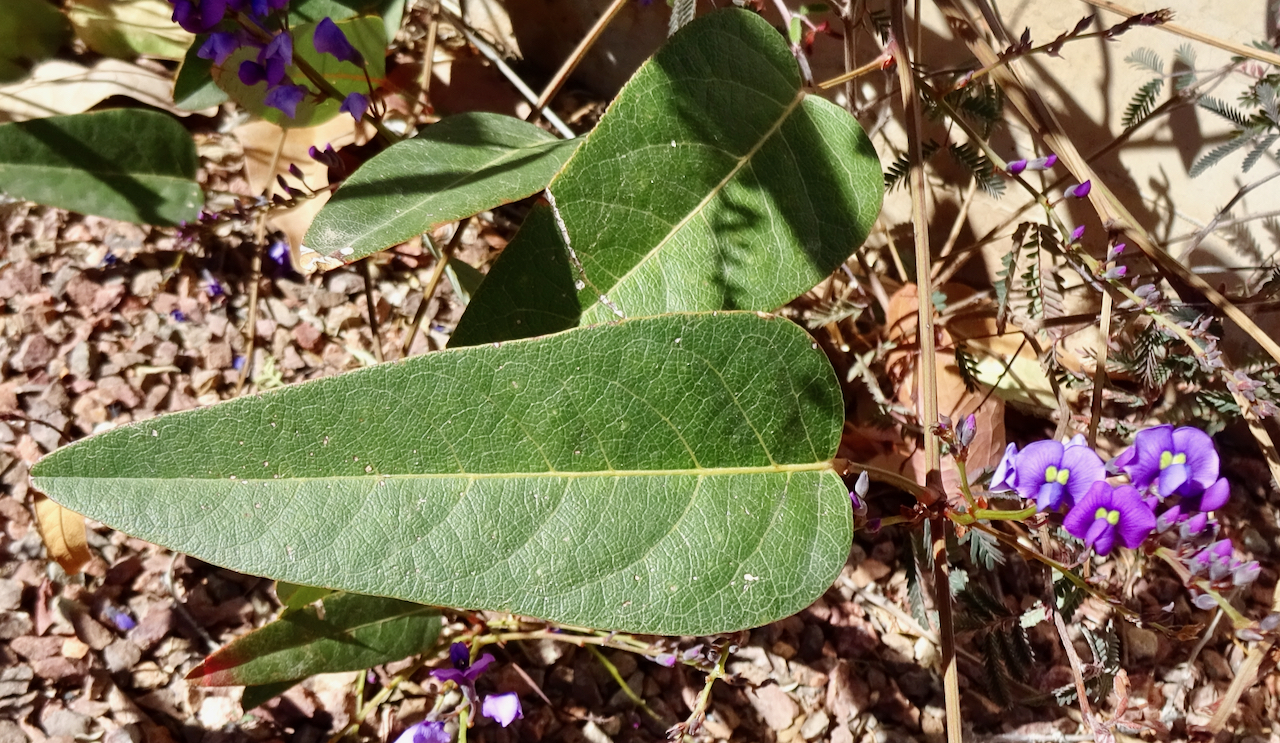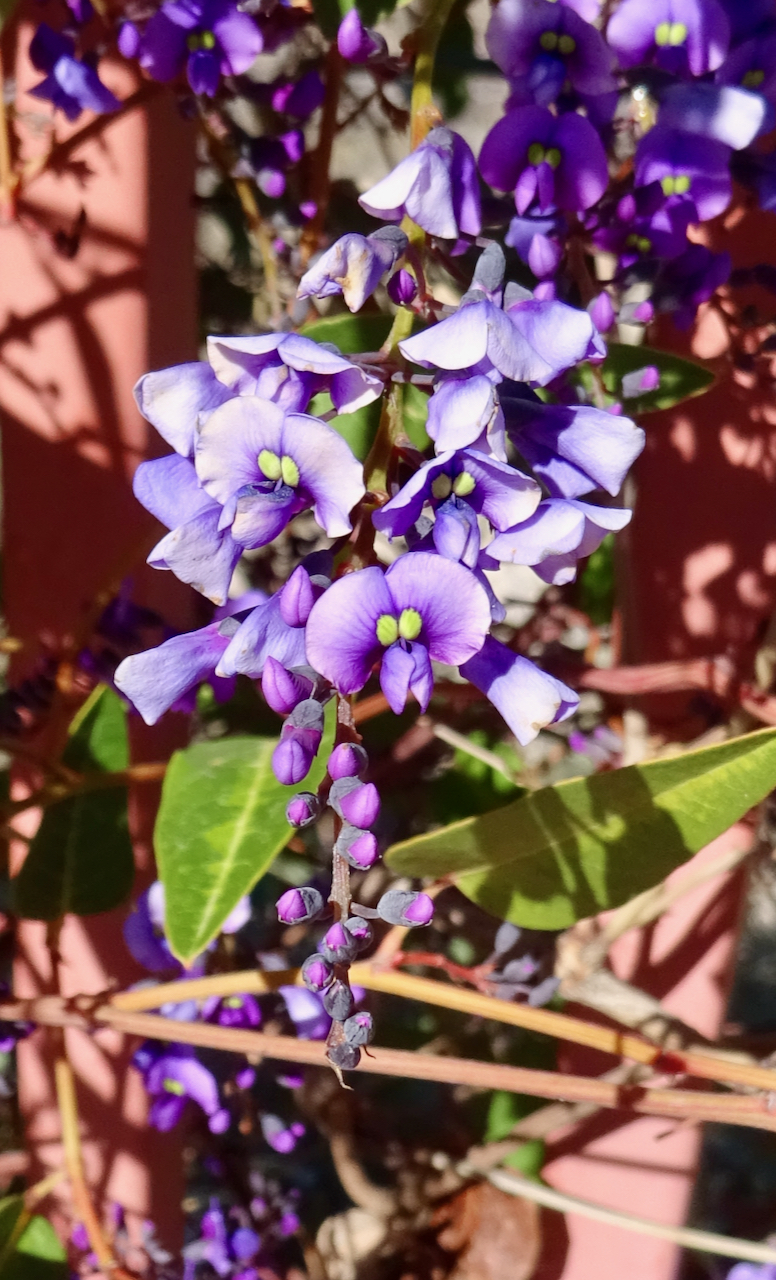Lilac Vine
Hardenbergia violacea

About the Plant
Lilac vine, an Australian native, goes by many names: purple coral pea, Australian lilac, lavender pea vine, false or Australian sarsaparilla, happy wanderer, and waraburra in the Australian Aboriginal Worimi language. The showy purple flowers will remind you of lilac but the shape of the flower clusters and the vining habit will remind you of wisteria. This vine climbs by twining around fences or trellises (or other plants) and stems can reach 20 feet or more. The leaves are evergreen with flowers appearing for a short period, usually late February into March.
Grow lilac vine in full sun to part shade, away from reflective surfaces, in well-drained soils. Provide regular irrigation during the hot, dry season. It may need a bit of fertilizer containing nitrogen and magnesium in alkaline soils. Lilac vine is hardy to about 25 degrees F; stems may be damaged at lower temperatures but recovery is quick. Prune to control a wayward branch. If needed to control size, lilac vine can be cut back to 1/2 even 1/3 in April after flowering. If allowed to grow to its full potential, make sure to provide a sturdy support.
Notes:
- Lilac vine produces a carrot-like root. European settlers experimented with its use as a substitute for sarsaparilla.
- Varieties with pink or white flowers and shrub forms may be available.
Wildlife value: the flowers attract bees.
More Information
Horticultural information from ASU
Map of distribution in Australia



